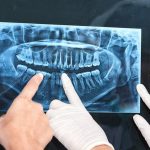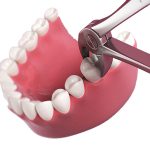What Are Gum Diseases and Periodontology? Gum diseases are among the significant problems affecting our oral health. In this article, we will thoroughly examine the causes, symptoms, preventive measures, and treatment processes of gum diseases. Periodontology is a branch of dentistry that deals with the diagnosis and treatment of gum diseases.
What Is Periodontology?
Periodontology is defined as the science of maintaining the health and treating the diseases of the gums and the supporting structures of the teeth. This field studies and treats conditions such as gingivitis (gum inflammation) and periodontitis (gum disease). Gum diseases occur as a result of infection and inflammation in the tissues surrounding the teeth and, if not treated in time, can lead to tooth loss.
The Importance of Periodontology
Periodontology plays a critical role in prolonging the life of teeth by preserving gum health. Healthy gums are fundamental structures that keep the teeth stable in the mouth. Gum diseases affect not only oral health but also overall health, potentially leading to serious health issues such as heart disease, diabetes, and respiratory infections.
What Are the Symptoms of Gum Disease?
When detected early, symptoms of gum disease can be treated and controlled. Common signs include:
-
Bleeding Gums: Bleeding while brushing or flossing is one of the first signs of gum disease.
-
Redness and Swelling: Red, swollen gums are a clear indication of inflammation.
-
Persistent Bad Breath: Chronic bad breath may be a symptom of gum disease.
-
Gum Recession: Receding gums and exposed tooth roots signal the progression of gum disease.
-
Loose Teeth: Teeth that are loose or shifting can be a severe symptom of gum disease.
What Causes Gum Disease?
There are several causes of gum disease. While some are manageable, others are related to genetic factors. The primary causes include:
-
Bacterial Plaque: A sticky layer of bacteria accumulating on the teeth is the most common cause of gum disease.
-
Poor Oral Hygiene: Inadequate brushing and flossing allow bacteria to build up and lead to gum disease.
-
Smoking: Tobacco use significantly increases the risk of gum disease.
-
Genetics: A family history of gum disease raises the likelihood of developing it.
-
Hormonal Changes: Hormonal fluctuations during pregnancy, menstruation, or menopause can increase gum sensitivity.
-
Nutritional Deficiencies: Poor nutrition weakens the immune system, making gums more vulnerable to infection.
How Can You Prevent Gum Disease?
Preventive measures can help protect your oral health. Here are some tips to prevent gum disease:
-
Brush and Floss Regularly: Brush your teeth at least twice a day and floss daily to clean between the teeth.
-
Routine Dental Check-Ups: Visit your dentist regularly for professional cleaning and examinations.
-
Healthy Diet: Eat a diet rich in vitamins and minerals to support gum health.
-
Avoid Tobacco: Refrain from using tobacco products, or seek help to quit.
-
Limit Alcohol Consumption: Reducing alcohol intake supports better gum health.
-
Manage Stress: High stress levels can weaken the immune system and increase gum disease risk.
How Is Gum Disease Treated?
The treatment of gum disease depends on the stage and severity of the condition. Early-stage gum diseases are typically easier to manage. Common treatment methods include:
Medication
Medications are used to control infection and reduce inflammation. Antibiotics, antiseptic mouthwashes, and anti-inflammatory drugs are commonly used in gum disease treatment.
Scaling and Root Planing
Scaling involves removing plaque and tartar from the tooth surfaces, while root planing smoothens the tooth roots to prevent further bacterial buildup. These procedures are often performed under local anesthesia and are essential for maintaining gum health.
Surgical Intervention
Advanced gum disease may require surgical treatment. Procedures such as flap surgery, bone grafting, and soft tissue grafts are among the surgical techniques used to restore gum health.
Laser Therapy
Laser treatment is a modern approach that targets and removes infected tissue and bacteria. It offers less discomfort and faster healing compared to traditional methods.
Conclusion
Gum diseases are serious conditions that negatively impact both oral and overall health. Periodontology plays a vital role in the diagnosis and treatment of gum diseases. Recognizing the early signs and taking preventive action is key to stopping the progression of the disease. Regular dental visits, proper oral hygiene, and a healthy lifestyle are essential to protecting your gums.
Remember, healthy gums are the foundation of a healthy smile. By taking proper care of your gums, you can enjoy a healthier and happier life.
This article has provided detailed information on the causes, symptoms, preventive methods, and treatment options for gum diseases. By answering the question “What are gum diseases and periodontology?” comprehensively, we have created an informative guide to help you protect your oral health.
Wishing you healthy days!


